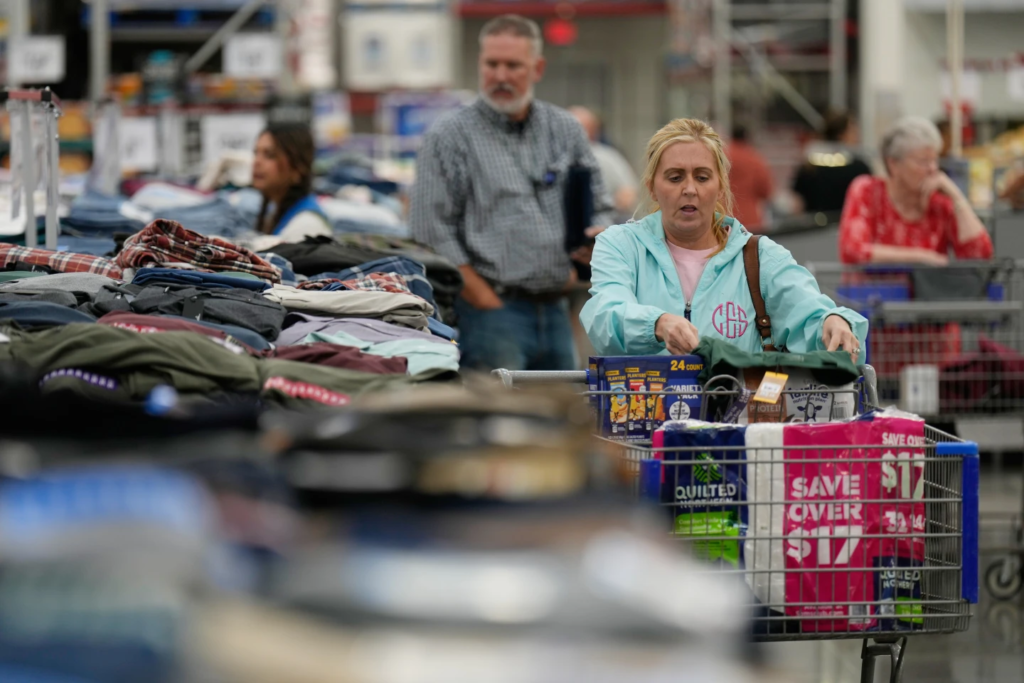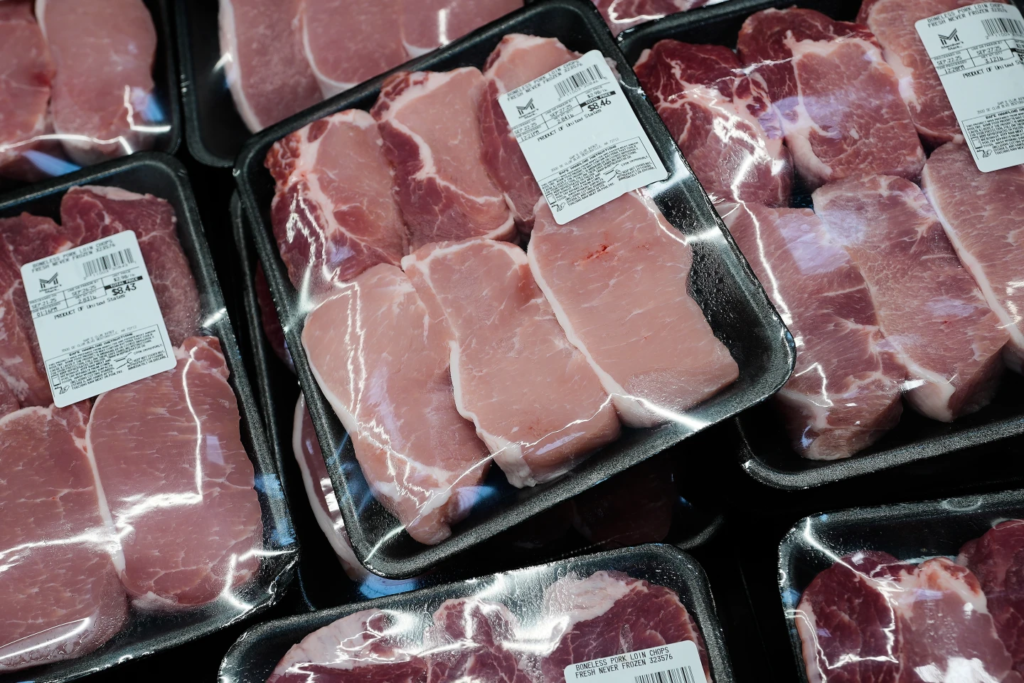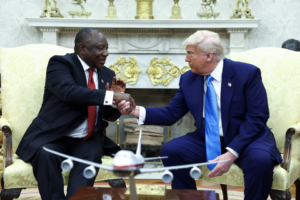Inflation in the U.S. has climbed a bit higher for three of the past four months to slightly above where it stood a year ago — a period that was a major contributor to the political downfall of former Vice President Kamala Harris. Nevertheless, despite the increase, President Donald Trump and senior policymakers at the Federal Reserve are positive about the trajectory of the economy.
President Trump declared last week at the United Nations General Assembly that “grocery prices are down, mortgage rates are down, and inflation has been defeated.” The message painted a picture of economic stability — a picture that is far removed from recent government data showing consumer prices were up 2.9% in August from a year earlier, compared with 2.6% last year and well above the Fed’s 2% goal.
In August, just before the Federal Reserve first cut rates in 2025, Chair Jerome Powell also sounded a reassuring note, stating that inflation “has come down a great deal from its post-pandemic highs” and that “upside risks have diminished.”
But economists warn that the convergence of climbing consumer prices, new tariffs, and pre-emptive rate cuts will test the White House’s credibility and the Fed’s independence in the months ahead.
Inflation Persists as Voters Bemoan

Despite claims of progress under officialdom, one of the longest-running bugbears for U.S. households is inflation. The majority of voters continue to name high prices — particularly for food, rent, and gasoline — as their top economic concern, in recent Gallup and University of Michigan surveys.
“The administration stands the risk of underestimating the psychological effects of inflation,” said Peterson Institute for International Economics senior fellow Karen Dynan. “People recall how rapidly prices increased after the pandemic, and with tariffs now causing import prices to rise, those jitters are reasserting themselves.”
Dynan warned that unless inflation stays elevated, “the Fed’s recent rate cuts — and the several more to come — could ultimately be viewed as a mistake.”
The Fed’s Balancing Act

In its Sept. 16–17 policy meeting, the Fed acknowledged that inflation remains above target levels, but policymakers voted to cut the benchmark interest rate for fear of rising unemployment and blunting business investment.
The action is a delicate balancing act. The Fed is hoping Trump’s tariffs will have a fleeting impact on inflation. But if those import duties continue to spread throughout the economy — raising prices for consumers and producers — the central bank’s image as an inflation warrior could be at risk.

Tariffs Put Pressure on Prices
Trump’s escalating tariff war is increasingly a leading cause of inflation. Last month alone, the administration imposes 100% tariffs on pharmaceuticals, 50% on bathroom vanities and kitchen cabinets, and 25% on heavy trucks. He also threatened to impose “a massive increase” in Chinese import duties in retaliation for Beijing’s restrictions on rare earth exports.
These steps are already spilling over to industries. The cost of durable goods such as furniture, appliances, and toys rose nearly 2% in August, the first sustained increase in nearly three decades.
On supermarket shelves, food inflation persists. Prices for staples climbed 2.7% from last year, but coffee prices soared nearly 21% because of 50% tariffs on Brazilian imports and drought-reduced shortfalls in world coffee supplies.
Both manufacturers and retailers will be more inclined to pass the higher input costs on to consumers. Campbell Soup Co., for instance, implemented new “surgical pricing initiatives” to offset the added canning cost of steel and aluminum tariffs.
At the nation’s biggest maker of artificial Christmas trees, National Tree Company, CEO Chris Butler said prices will rise some 10% this season. “We can’t absorb all the increases,” Butler said. “The factories in Asia can’t either, so some of the cost inevitably gets passed on to consumers.”
Supply Constraints and Price Pressures
Production disruptions have contributed to the crisis. Artificial tree business in China, for example, shut up shop this spring when tariffs hit 145%, leading to supply shortages that persist even after duties were reduced to 30%.
Meanwhile, rising labor and real estate costs in the U.S. have discouraged domestic production, so that companies have come to depend on imported goods that are now more expensive due to trade barriers.
The economists warn that if the tariffs persist, they could lead to a second phase of inflation, driven not by demand but by supply constraint and protectionism.
Fed Credibility on the Line
Federal Reserve policymakers are increasingly at odds over interpreting the inflation data. Kansas City Fed President Jeffrey Schmid warned that the loss of public trust in the central bank’s ability to combat inflation “is considerably more expensive than a temporary price rise.”
The Fed must maintain its reputation,” Schmid said. “History shows us that all inflations do not cost as much to contain — but the ones created by loss of confidence in monetary policy are the toughest to contain.”.
Still, other officials remain cautiously optimistic. Fed Governor Stephen Miran, appointed by Trump, argued that falling rental prices and a slowdown in consumer demand — partly due to stricter immigration policies — will help ease inflation pressures in the coming months. “I’m more sanguine about the outlook than most,” Miran said.
The Bigger Picture: Political and Economic Stakes
For Trump, maintaining good inflation stories is key to upholding voter confidence as midterm elections approach in 2026. But the administration’s application of tariffs as a tool of trade clout can be counterproductive if holiday-season price inflation continues, economists say.
“If Americans start to think their monthly mortgage payment or bill at the grocery store is rising again, no spin doctor in Washington is going to make that disappear,” Dynan said.
The September inflation report coming out October 24 after a brief government shutdown postponement will probably be a pivotal input into monetary policy thinking and attitude leading up to 2026.
Meanwhile, inflation remains the curse of otherwise robust economy that continues not to fully leave behind the impacts of pandemic disruptions and global trade tensions.




